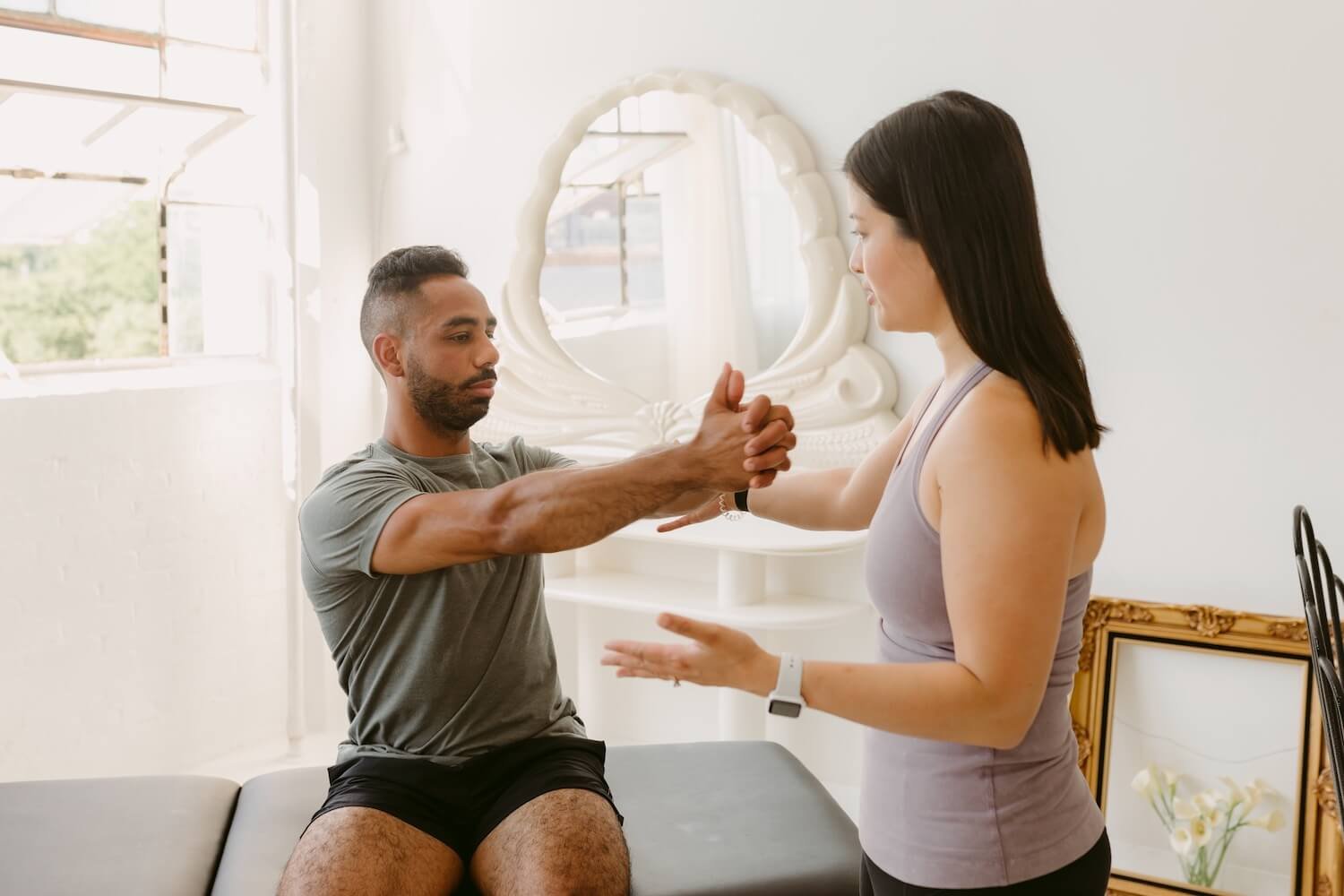
The Dizzy Brain: Demystifying Vestibular Exercises
Educational Series
Become an expert in your vestibular exercises!
Develop an in-depth understanding of the most common types of vestibular exercises prescribed for dizziness, vertigo, and imbalance!
The key to improving your dizziness is understanding the purpose behind the vestibular exercises that you’ve been prescribed.
Once you understand why you are dizzy and which exercises are the most appropriate for you, you will be able to perform your exercises with more confidence.
I will share with you the information I give my patients, backed by years of postgraduate education and clinical experience.
Knowledge is power. The key to being dizzy-free is becoming an expert in your exercises.
In this educational series, you will learn about the different types of vestibular exercises and how they work. You will also discover how to modify these exercises based on symptoms, needs, and goals.
You will have a clear understanding of the exercises you’re doing and their specific purpose. You will also have the tools and knowledge needed to modify these exercises, so you can feel confident performing your exercises.
Vestibular Exercise Topics
are used to improve eye control during head and body movements. VOR and gaze stabilization exercises are prescribed to address blurred vision that occurs while moving around. We will review how it’s typically tested, the purpose of this exercise, and how the exercise can be modified.
are used to improve dizziness triggered by visual motion. Treatment involves systematically exposing yourself to the triggering visual stimuli until the symptoms improve. Visual motion sensitivity exercises work for dizziness and imbalance in visually stimulating environments, such as shopping malls and grocery stores, watching action movies or TV, or walking through environments with patterned walls or floors.
Habituation Exercises
are used to treat dizziness that is related to different positions and movements. Depending on the positions or movements that trigger your dizziness, habituation exercises are prescribed in a specific way to progressively improve your symptoms of dizziness. Habituation exercises aim to reduce the intensity of your dizziness by gradually retraining the faulty signals from the inner ear organs to your brain that cause the sensation of dizziness so that it feels easier for you to move around.
*Video to be released*
Balance Exercises
are used to improve steadiness so that it is easier to move about in your daily activities. Balance exercises involve integrating inputs from your visual, vestibular, and proprioceptive systems to work better together and make you feel more stable and in equilibrium.
*Video to be released*
BPPV Treatment Maneuvers
are used to treat Benign Paroxysmal Positional Vertigo (BPPV), which is the most common cause of positional vertigo. You may feel this type of vertigo when you look up, lie down or turn in bed. This type of vertigo is due to “loose crystals” in the inner ear. The treatment involves a series of deliberate head and body movements that aim to reposition these displaced crystals within the vestibular system.
*Video to be released*
Are you ready?
The Dizzy Brain: Demystifying Vestibular Exercises will not only teach you about the most common types of vestibular exercises, but it will teach you what the purpose of each exercise is, how each exercise works, and ways to modify them to meet your needs and goals.
Less dizziness could be within your reach!
Are you a vestibular clinician?
You can improve the success rate of your prescribed vestibular exercises by empowering your patients with the knowledge to understand the purpose behind the exercises you’ve prescribed for them. This allows patients to be equal partners in the recovery process.
It’s well-known that patient empowerment, in which patients are provided with the knowledge, skills, and confidence necessary to actively participate in their own care, improves health outcomes.
However, I know that you’re a busy healthcare professional, so allow me—an experienced vestibular clinician with years of experience—to provide the necessary education on your behalf!
I can offer you a unique discount code that you can share with your patients, allowing them to access the educational video for a reduced rate of $10 CAD.
You deserve to be dizzy-free and be an active participant in your vestibular recovery by having a better understanding of the exercises that you’ve been prescribed.
FAQs
-
This educational series is for individuals experiencing vertigo, dizziness, and imbalance due to vestibular dysfunction. Perhaps you have already seen a provider who has prescribed vestibular exercises for you and want to learn more about what they are.
This series is NOT for individuals who are seeking individualized medical advice and exercise recommendations.
-
In addition to lifetime access to the video, you will be provided with:
A comprehensive summary sheet that breaks down complex concepts
An exercise tracking chart to monitor your progress
-
These videos are for general educational purposes only.
If you would like to seek advice regarding your specific condition, you can schedule a discovery call with me to explore whether virtual vestibular rehabilitation sessions might be suitable for you. Alternatively, you may reach out to a local vestibular rehabilitation provider.
-
Each video topic is priced at $20 CAD, which grants lifetime access to:
An expert-led video that explains a vestibular exercise topic,
A comprehensive summary sheet that simplifies complex concepts,
And an exercise tracking chart to monitor your progress.
Who am I?
My name is Sonia, and I am a Registered Physiotherapist and Vestibular Therapist based in Toronto, Ontario, Canada. I have a passion for helping everyone get back to doing what they love. Concussions and vestibular disorders are widely considered “invisible” conditions, and it may be difficult for others to understand how you feel because they can’t “see” it. My mission is to increase awareness of “invisible” conditions and help you understand what’s going on in your body so that you can feel empowered to have more control over your body and build your confidence to speak up about your health care needs.








